NFTs, NFTs, and more NFTs! Digital tokens and digital art have increased their popularity in recent years since the release of the first NFT eight years ago. But the question is, do people know exactly What NFT is?
We assume there is a certain approximation to the concept, but NFTs have so many factors, attributes, characteristics, and aspects related that clarifying them is a mandatory task.
In this middle-sized guide, we briefly discuss all the crucial points of NFTs to give creators and customers thinking of investing in these tokens the proper tools to come to fruition in their adventure in the NFT world.
What Is NFT?
NFT stands for non-fungible token, meaning an NFT is an unrepeatable and unique digital asset based on a particular blockchain technology – a distributed public ledger that records transactions.
NFTs are traded on NFT marketplaces, particular websites, or NFT exchanges where you can purchase and obtain a particular NFT in exchange for a specific cryptocurrency.
Non-fungible tokens (NFTs) verify ownership over a digital art or creation piece. This way, you can sell or exchange it through the media you consider the best for you. This situation is similar to the real-life art world, where you can freely download an image –for example, the image of a painting– from the Internet without boasting the ownership of that image.
Think for a moment about a high-quality physical, artistic work, for example, a Picasso painting. You can copy, download, paste, edit, and print a painting like the Guernica and hang it on your wall. In this scenario, you’re using the image, but you’re not the owner of the Guernica. In other words, an NFT is a digital signature of the original work.
In general, you can find NFTs in two ways:
- As a single NFT. Top artists worldwide often create single NFTs, which are unique pieces of digital artwork. You can acquire these digital objects with crypto and legally own the items.
- As a multi-edition NFT. In some cases, NFT is not equal to digital scarcity or unique artwork. Sometimes, artists or developers – as in the case of NFT trading card games – create an NFT that several holders can own.
- As a part of an NFT collection. You can browse NFT collections on NFT platforms like OpenSea and notice that they are built of thousands of tokens. Each of these tokens is an independent NFT you can acquire.
How Do NFTs Work?
When discussing NFT digital art, there are two possible points of view: the perspective from the creator or artist and the perspective from the buyer, holder, or collector.
The Point of View of the Artist
Many physical artists, i.e., painters, photographers, engraving artists, and others, convert their physical art into NFTs or create NFTs directly in other programs, like Photoshop, Illustrator, or specialized software. This way, they sell NFTs in the marketplaces available on the Internet.
NFTs expand the possibilities of creators regarding reaching new markets worldwide and offer a new series of works, even with a different technology. Besides, thanks to smart contracts – which we will explain later – artists can gain royalties every time their work is sold or changes hands.
The Point of View of the Buyer
When users buy digital assets, they gain the copyright and the right to use the images as they see fit. Of course, buyers can always show off they’re the owner of a unique digital file, and they have the blockchain signature to prove it.
Buyers also acquire NFTs as investments to earn profits when they resell in marketplaces or secondary markets. Besides, many buyers acquire NFTs since they want to support their favorite artists, and buying NFTs is straightforward.
However, buyers have difficulty deciding the proper NFT they should invest in or the most profitable digital collectibles. The risk is high, as well as the profit, if they know what they are doing.
Then, can every creation be sold as an NFT?
The short answer is yes. You can practically convert anything you want into a NFT and sell it in the NFT space. Yes, including this article. But do not do it! It has a copyright! Below, I describe the most common types of NFT that NFT creators trade on platforms.
What Are the Different Types of NFTs?
Artists put at users’ disposal several types of digital files, NFTs, and tokens related to the industry or their art. The NFT world has plenty of possibilities and options you can acquire through the NFT supermarket.
NFT Art
What is NFT art? NFT art is the most common type of NFT in virtual worlds and NFT environments since creators are mostly artists wanting to sell their crypto assets in these different media. Even though NFT art can fit almost everything, like music, video, or NFT avatars, I define this category as digital artwork created by visual digital artists, like painters, photographers, or designers.
NFT Music
When people ask me what music NFT is, I always say the answer is quite obvious. NFT music works as music or audio collectors can buy and own as if it were their song or leitmotiv. This way, they can receive royalties when other people use the NFT music.
NFT Video
What is an NFT video? These non-fungible tokens are videos that have been issued as NFTs. They are commonly moving images ranging from GIFs to complete music videos. These valuable assets can be sold just like images or GIFs. The most famous NFT video is CROSSROAD by Beeple sold for $6.6 million.
NFT Game

Many crypto users and NFT holders attempted to use their NFTs as avatars for their game profiles. Still, nowadays, many NFT games have been released due to the potential of digital tokens. These games are based on a new experience where collecting rare digital items is an important part of gameplay. These items are non-fungible and unique, verifying the ownership of the gamer over the item.
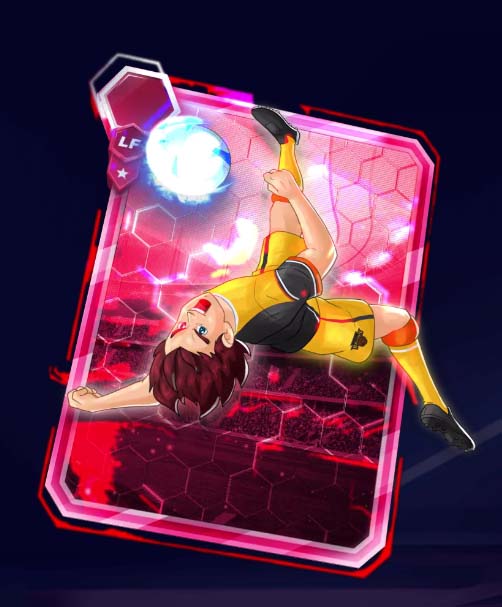
A special category of NFT games is the trading card games. Many NFT trading card games, such as Dark Country and PlayFootball, have emerged recently. In these games, every card is an NFT artwork based on a specific blockchain, like the Ethereum blockchain. Digital trading cards like those can be traded and improved according to the platform’s rules. Most NFT cards are based on video games, cartoon characters, TV shows, anime, sports, etc.
Real Estate NFT
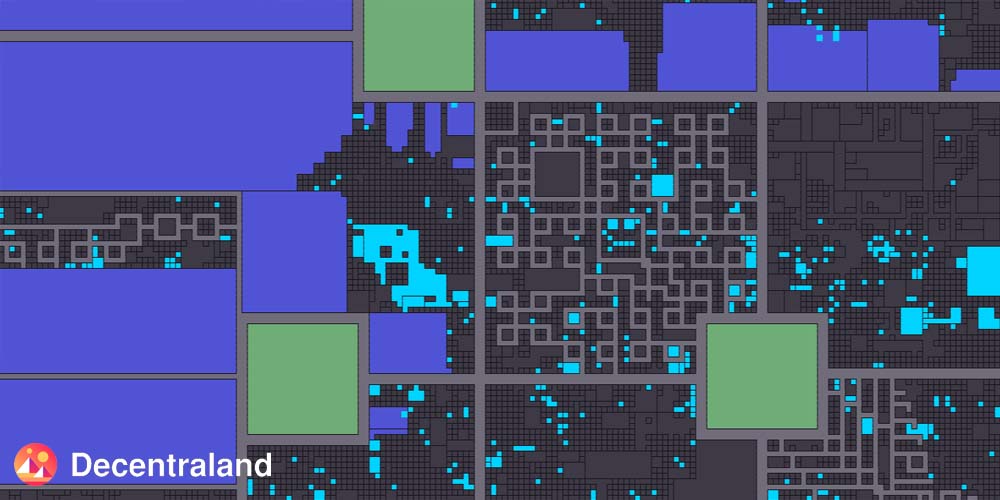
Some metaverses like Decentraland and CryptoVoxels offer users the opportunity to acquire land plots as if they were real estate in the real world. After completing this NFT purchase, you are the legit owner of the virtual plot and can do practically everything you want. Some landlords monetize real estate by making it available for brands looking to promote products or use it as a virtual branch.
PFP NFT

What does PFP NFT stand for? It stands for Picture-for-Profile non-fungible token, i.e., digital assets that revolve around great collections of avatars to use in the metaverse, NFT platforms, video games, and other media. The most famous NFT collections with high sales volume are PFP NFTs. Generally, new artists of digital works in the NFT environment started by creating PFP NFTs since they are commonly 2D and easier to create.
For more information about PFP NFT and avatars, read our article “What Is an NFT Avatar.”
DAO NFT

DAO stands for Decentralized Autonomous Organization, i.e., a conglomerate managed by its community of members. Here, segments vote to decide the organization’s next steps regarding multiple topics, such as domain names, what NFTs will be traded or exchanged, the community rules, or what NFT provider they will accept. Then, what is DAO NFT? They are tokens created in these decentralized organizations that bring monetary benefits to their structure and stakeholders.
NFT Tickets
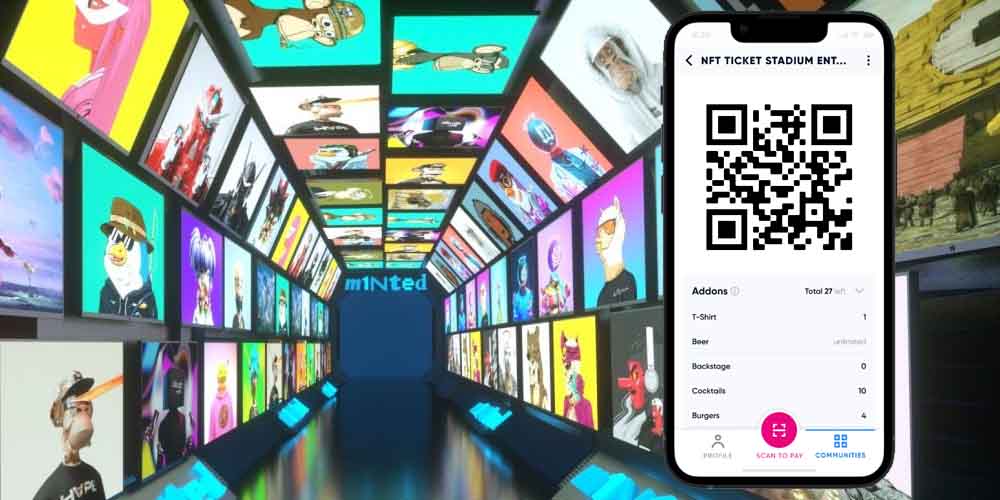
What are NFT tickets? We mentioned above that practically everything can be converted into an NFT. As such, every person with a crypto wallet can boast NFT ownership, regardless of the items or the nature of the NFT.
This is also the case of NFT tickets, which are tickets stored on a blockchain network that contain access credentials to special events, services, or products. NFT tickets commonly come as QR codes that integrate all the relevant digital content to prove ownership.
At this point, the good idea is to ask oneself: Are all these types of NFTs produced in the same way?
In a nutshell, no! As we mentioned in the first section of this article, most of the time, NFTs are created as a single artwork, but many other times, they are part of NFT projects that involve much more than just the art.
Here is when we need to discuss NFT projects.
What Are NFT Projects?
In the current scenario where NFTs are mainstream, multiple projects rise from the ground. Most NFT projects are NFT collections containing hundreds or thousands of tokens. But NFT projects are also in-game items or entire games or metaverses where the interaction with digital assets is the quintessence of the experience.
In general, NFT projects have a larger scale than most NFTs and cover a big part of the NFT art world since they boast thousands of tokens. This is why NFT projects are traded on NFT marketplaces: to facilitate access and transactions. Below, we resume the most popular NFT projects you can find on NFT marketplaces and in any secondary market.
CryptoPunks

This NFT project is built of 10,000 2D pixel-art NFTs that stand out due to their characters and unique traits. This project is divided into several collections, each addressing the same topic but from different points of view. CryptoPunk is the most expensive NFT project ever since an entire collection was sold for 124,457 ETH, which is USD 532 million.
CryptoKitities

CryptoKitties by Dapper Labs is the perfect example of an NFT video game where each NFT kitty represents an avatar and a player. If you acquire one of these kitties, another person won’t have the same avatar as yours. We can define CryptoKitties as an art project since every kitty is an independent piece of good design and collection.
The Sandbox

The Sandbox is an NFT video game and a multiplayer gaming platform that allows you to invest in thousands of NFTs that can be characters, plots, and items. In The Sandbox, beyond owning cryptographic assets, you can build your virtual land and participate in constructing a vast world. Besides, in The Sandbox metaverse, you can interact with other players, express yourself thanks to avatars, and join some brands that rely on the metaverse.
Bored Ape Yacht Club

Bored Ape Yacht Club is probably one of the most popular NFT projects since these NFTs have been acquired by famous people like Justin Bieber, Snoop Dogg, Paris Hilton, and Mark Cuban. This project is integrated by 10,000 unique 2D pixel art NFTson the Ethereum Blockchain. A strong point for the popularity of BAYC is that each character has a particular design. When writing this article, the Bored Ape Yacht Club project boasts a trading volume of USD 1.384 million.
What Are the Main NFT Attributes?
Six main attributes define the quality and the price of the NFT. This is crucial information when purchasing any digital token. Let’s explain each of them.
Indivisibility
NFTs represent total unity and have been designed to be inseparable for serving their utility. It means you can’t divide the NFT into several small tokens with a lower price or value. This way, holders can bring to bear their basic usage rights over every action related to that unique asset.
Uniqueness
Uniqueness is probably the most critical aspect of any NFT, either being an artwork, a video clip, a photo, or an avatar since holders and collectors pay a huge amount of money for a unique art piece. Besides, what would be the sense of NFTs if any people might use virtual or physical money to get it? Uniqueness ensures that your token is just one NFT. Non-fungibility means that another similar token cannot replace your token.
NFT Rarity
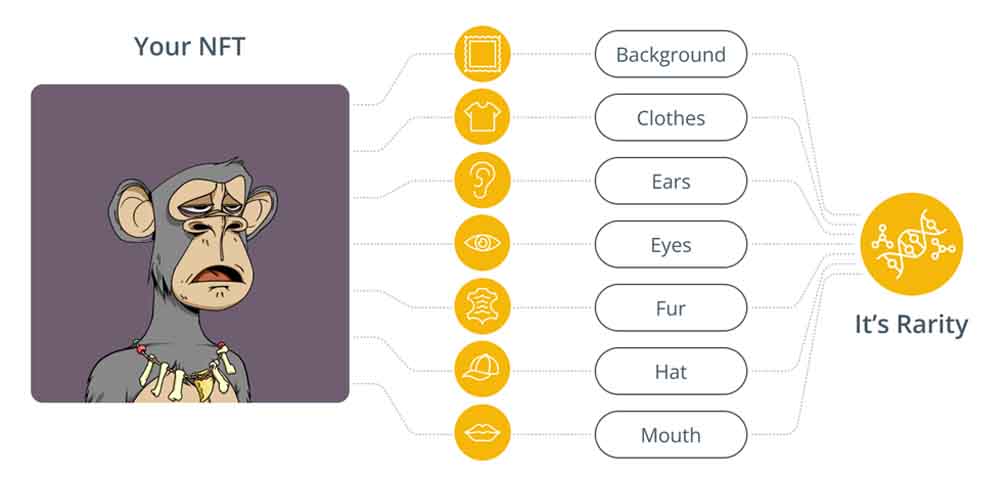
What is NFT rarity? Like uniqueness, rarity is a crucial factor directly raising the token’s price. Rarity refers to the scarcity of the non-fungible token. It means the more scarce the NFT traits are, the higher its value. For example, if in a particular collection, just one NFT has one or two traits – the background or the eyes – that NFT probably is rarer than other NFTs of the same collection.
Authenticity
Due to blockchain technology, digital assets, especially NFTs, work as proof of authenticity since the records that the blockchain leaves in the network are unique and cannot be replicated. In short, NFTs provide unique identification codes that work as bar codes.
Moreover, some NFTs are digital representations of real-world assets, especially when it comes to apparel, fashion, and art. This way, owners can prove they hold an authentic asset.
Ownership

When it comes to selling or trading a digital token, holders need to prove that they are the respective owners of the asset they possess. The stamp that blockchain technology leaves in the token is associated with a unique holder and a unique digital wallet with an unrepeatable identification number.
Ownership is strictly related to the aforementioned since NFTs are unique and are attached to a single owner. Besides, they also prove you own an authentic art piece, either a virtual real estate, a video game avatar, a photograph, or whatever.
Utility
NFT Utility is not a straightforward attribute of non-fungible tokens, but still, it does not hurt to mention that, like physical artwork, NFTs are designed for a particular purpose. So, What is NFT utility? This concept refers to the fact that the NFT can be used for a specific function in a determined ecosystem. Although it is not strictly related to the type of NFT, type, and utility often match.
What Are Smart Contracts?
Regardless of all the attributes we’ve described, all NFTs are linked to a particular blockchain technology via smart contracts.
Smart contracts are digital agreements that are self-executing when NFTs are bought or sold. These contracts contain all the clauses and terms in lines of code and IF/THEN scenarios. So, when some conditions are fulfilled, new frameworks happen. These contracts are also hosted in the same blockchain as the NFT. Smart contracts make NFTs immutable, decentralized, and transparent. Thanks to smart contracts, holders and creators can prove their NFTs are not illegal.
Smart contracts are executed when the ownership rights of non-fungible tokens and the sale agreement within the contract code align.
What Are NFT Drops?
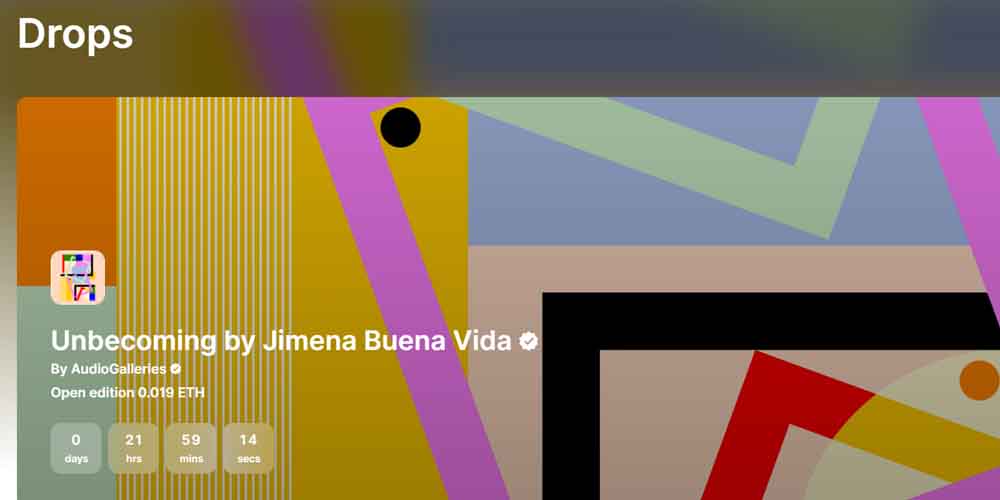
Many NFTs are offered to buyers, holders, and collectors through NFT drops. But what is NFT drop?
An NFT drop is a limited edition of digital art or collectibles that will be available for the above-mentioned interested ones for short periods. An NFT drop for a specific asset also indicates when the digital token is open for bidding or purchase.
Most NFTs and collections you can find on NFT platforms adopt the form of NFT drops. Besides, most drops are promoted in advance so collectors and potential customers are prepared to bid at the right time.
What Is an NFT Wallet?
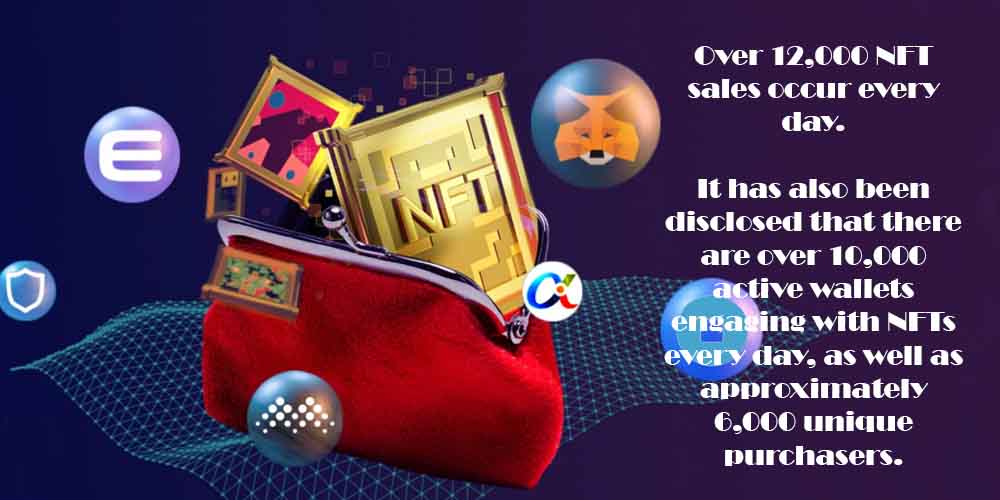
Source: Demandsage.
An NFT or crypto wallet is a digital wallet where you save your cryptocurrencies for further transactions. Crypto wallets are fundamental to buying and selling NFTs in any NFT marketplace and other digital assets and items.
Not all NFT marketplaces and wallets use the same cryptocurrencies. Therefore, you must check what crypto you need, depending on what currencies your NFT provider accepts. Besides, NFTs are based on a particular blockchain technology, so using the right crypto wallet is crucial for future successful transactions. The most common NFT wallets are the following:
- Coinbase. One of the best-rated wallets. It’s a hot wallet you can use to keep your NFTs safe for business or personal finance.
- MetaMask. It’s a very easy-to-use wallet via your Internet browser or desktop application. It supports several cryptos, like Ethereum, Solana, and other cryptocurrencies.
- Crypto.com DeFi wallet. A wallet enabling crypto and NFT transfers and purchases, also serving as a marketplace.
What Is an NFT Marketplace?
An NFT marketplace is a virtual space that works as an art gallery where creators and artists mint and showcase their NFTs. NFT marketplaces are linked to blockchain technology, and not all NFT markets accept the same cryptocurrencies when minting or buying NFTs.
There are centralized and decentralized marketplaces. Centralized and decentralized marketplaces differ in decision-making. Centralized ones impose guidelines, while decentralized platforms let users shape terms, conditions, and processes.
The main NFT marketplaces where to buy or mint intangible items are described below.
What Is OpenSea?
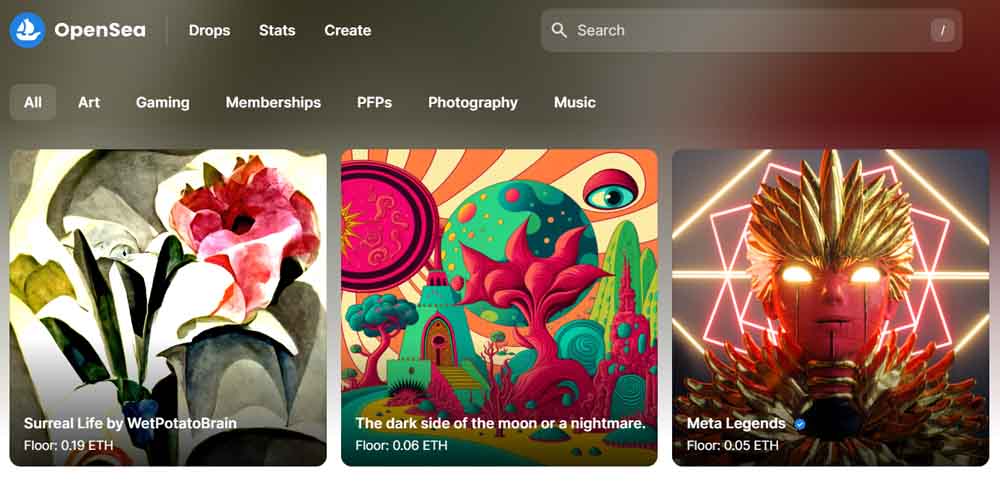
OpenSea is one of the largest NFT marketplaces on the Internet nowadays. Most of the most popular and tradeable NFT collections of the NFT universe, such as the Bored Ape Yacht Club collection, lie on OpenSea. It is an open marketplace, so anyone can sell, buy, or mint NFTs.
What Is Rarible?

Rarible is also one of the most popular NFT marketplaces where you can buy NFTs or sell them if you are an artist, creator, holder, or collector. Its easy-to-use interface allows you to connect your wallet almost immediately and start to mint or sell your virtual items in a matter of seconds.
Binance

Binance is one of the most important platforms for trading cryptocurrencies. But it also allows you to trade NFTs. Binance monopolizes many NFT projects and assumes that the demand for NFTs remains current to offer unique tokens you can’t find anywhere else. The best of Binance NFT is that it lets you buy cryptos and directly use them to acquire NFTs.
NBA Top Shot

As its name suggests, this marketplace is related to the National Basketball Association NBA. This platform is a unique site, releasing unique memories, artwork, and moments of this sport as securitized NFTs. You can buy them using cryptos, recording transactions, and exchanging tokens on the same platform. NBA Top Shot moments are clear examples of video NFTs.
Now we’ve clarified the main aspects and attributes of NFTs; it’s time to discuss one of the most crucial NFT functions: minting NFTs.
What Is Minting NFTs?
Minting an NFT is the process of making a particular non-fungible token or NFT collection available on an NFT market or NFT exchange. When creators mint NFTs, they upload their creations – or create them directly on the platform – to markets by paying the corresponding fees and setting the floor price and the sales method.
How Much Does It Cost to Mint an NFT?
The cost of minting NFT will depend on many factors. The main two are the NFT platform in which you mint the NFT and the cryptocurrency your NFT is based on. However, regardless of the platform of your preference, you probably will have to pay gas fees for the NFT work. Some sites also prompt you to pay commissions, especially when you complete secondary sales. But what are gas fees? Let’s explain this concept.
What Are NFT Gas Fees?

Crypto gas fees are commissions or transaction costs in blockchain networks. They correspond to a part or percentage of the price of the NFT, so the higher the price of the NFT, the higher the gas fee. As such, gas fees are paid in cryptocurrencies and validate the transaction on the network.
For instance, in the Ethereum blockchain, gas fees rise to ETH -0.37%.
Developers define gas fees as the fuel that allows a particular blockchain network to work. Gas fees are also known as miner fees or similar.
Since gas fees can be very high, you’ll want to avoid them if possible. Then, we recommend you read this How to Avoid High NFT Gas Fees article.
What Is Floor Price NFT?
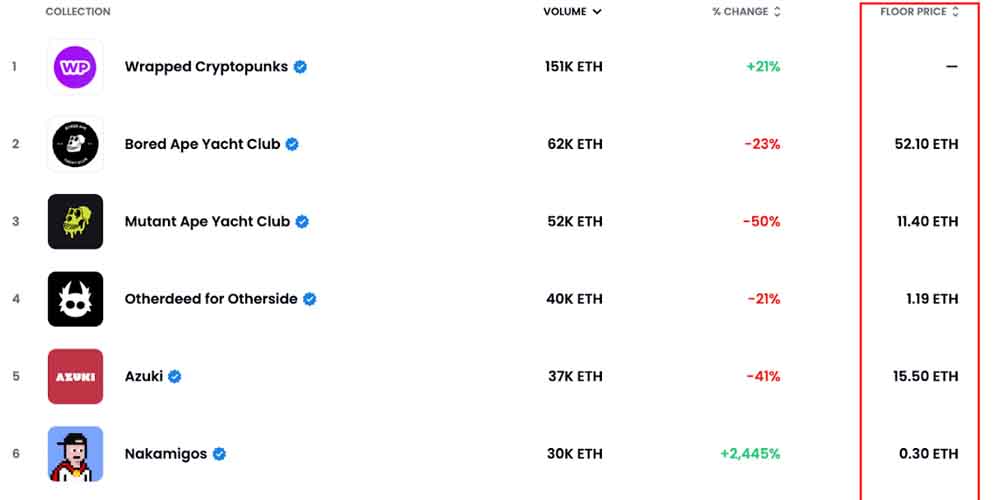
In a nutshell, the floor price is the lowest price a particular non-fungible token is listed for sale within an NFT project or collection. It reveals the base worth of a collection or particular NFT. Essentially, it represents the cost needed to transfer tokens. The floor price is also crucial when determining the NFT value. When minting an NFT, establishing the floor price is fundamental to setting your NFT worth. Now you know what the floor price NFT is, let’s discuss sales methods.
The Best NFT Sales Methods
When minting an NFT, you can set how you want your NFT to be acquired. There are two types of ways you can offer your creations:
- NFT auction. It’s a specific period, which can be a week or a month, in which you can make your NFT available for buyers to place their bids. At the end of the period, the highest bid wins the NFT.
- Direct sale. Every person can enter the platform or exchange and directly buy a higher caliber artwork without problems as long as this possibility exists.
The floor price, gas fees, commissions, and how creators decide to sell a specific NFT or collection – and the attributes of the NFT – determine the final price of the digital artwork.
If you’re interested in knowing Which Are the Most Expensive NFTs, read the article we’ve meticulously prepared here on NFTMonk. Maybe the price some NFTs can reach will encourage you to create your tokens.
What Is NFT Whitelist?

In the current and popularity-increasing NFT world, hundreds of tokens are released daily. Some cost one dollar, while others reach thousands. In this context of high pressure and constant competition, NFT stakeholders were worried about accessing the project they supported. Creators and developers created whitelists to guarantee access to these projects before anybody.
An NFT whitelist is an approved list of wallet addresses or users who have shown interest in a particular NFT project or have contributed monetarily to the project. As such, they gain access to exclusive minting rights, commonly secret data before the launch, or access to special sales.
The Bottom Line
NFT art, in all its forms, is gaining popularity nowadays, enticing thousands of artists worldwide to create digital tokens and investors to buy NFTs. Digital art also tends to raise funds for developers and creators who want to finance new NFT projects and the development of new collections.
In our NFT for dummies article, we clarify these aspects and more!
The information we discussed in the previous paragraphs is crucial for novices and seasoned NFT searchers. It represents a gateway to this phenomenon and a good guide NFT enthusiasts should always keep and consider.
FAQ Section
What Does NFT Mean?
NFT stands for non-fungible token. It means a digital asset or collectible that cannot be divided, separated, fungible, duplicated, or faked.
What Is an NFT, and How Does It Work?
NFTs are unique digital assets that represent ownership. NFTs lay on a particular blockchain technology, which records all the data of the asset in the crypto network.
Can Any Person Buy an NFT?
Every person with a crypto wallet and funds within the wallet can buy an NFT. They only need to connect their wallet account to the NFT marketplace where they want to buy the digital token.